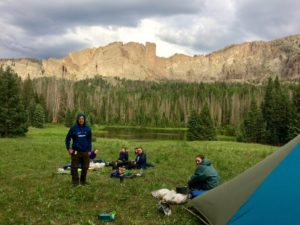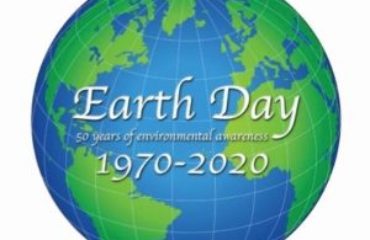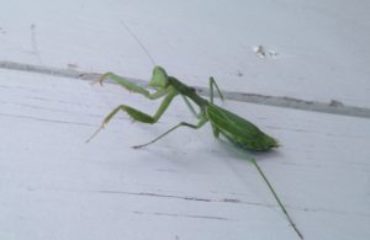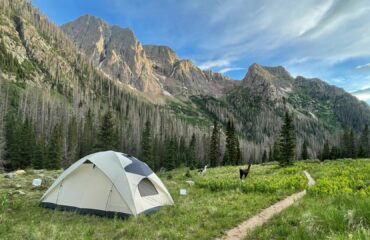By Kent Rector
 I’ve always been drawn to “wild” places. As a child I spent hours in my family’s yard playing in the bushes, digging in the dirt, and climbing trees. I guess I wouldn’t recognize our yard as “wild” these days but to the mind of a six-year-old living in Waverly, Iowa, my yard seemed huge and full of mystery. As I grew older, I started venturing further out. I started exploring the dry-runs and wooded areas around town. Eventually I found myself along the Cedar River on an isolated sandbar camping with friends nearly every weekend. I can now boast that I’ve spent countless days and nights on trails, in National Parks and Forests throughout the nation, and I still search for “wild” places today.
I’ve always been drawn to “wild” places. As a child I spent hours in my family’s yard playing in the bushes, digging in the dirt, and climbing trees. I guess I wouldn’t recognize our yard as “wild” these days but to the mind of a six-year-old living in Waverly, Iowa, my yard seemed huge and full of mystery. As I grew older, I started venturing further out. I started exploring the dry-runs and wooded areas around town. Eventually I found myself along the Cedar River on an isolated sandbar camping with friends nearly every weekend. I can now boast that I’ve spent countless days and nights on trails, in National Parks and Forests throughout the nation, and I still search for “wild” places today.
This last month I had the privilege of sharing my search with six high school students and a coworker. A large part of my job with Des Moines County Conservation is to develop programs that promote outdoor recreation and environmental education. In fact, the mission of my division is to “develop an environmentally responsible community.” So, I decided to put together a Wilderness program for students living in Des Moines County and after about ten months of planning, training, scheduling, and fundraising, everything came together. But why wilderness?
Did you know that there are zero acres of congressionally designated Wilderness in Iowa? The Wilderness Act was passed in 1964 by Congress, creating the strictest form of protection for wild areas in the United States. The Act defines wilderness as:
“A wilderness, in contrast with those areas where man and his works dominate the landscape, is hereby recognized as an area where the earth and its community of life are untrammeled by man, where man himself is a visitor who does not remain.”
Pretty cool, right? In fact, studies have shown that people feel better knowing that there are vast stretches of wild untrammeled lands out there. Even if they never plan to visit them, just knowing they could gives them peace of mind and a since of connection to the land. Data from the National Survey on Recreation and the Environment indicate that protecting air quality, water quality, wildlife habitat, unique wild plant and animal species, and bequest to future generations are all consistently rated as the top five most important benefits of wilderness. Wilderness Connect, a conglomerate of wilderness study groups including the Wilderness Institute, the Arthur Carhart Training Center, and the Aldo Leopold Wilderness Research institute, states that Americans, whether urban or rural, also attributed a high importance to six additional benefits including the scenic beauty of wild landscapes, the knowledge that wilderness is being protected (existence value), the choice to visit wilderness at some future time (option value), the opportunity for wilderness recreation experiences, preserving nature for scientific study, and spiritual inspiration. Research is also finding a slew of personal and community health benefits, but that’s another story. The benefits are numerous, but in its most basic form Wilderness provides us a baseline to how nature functions without human meddling.
The concept of, or the connection to wilderness can be somewhat elusive for most Iowans. Probably because Iowa’s landscape is currently the most altered in the nation. Historically, prairie covered 75 to 80 percent of Iowa. Today, less than 0.1 percent of that original prairie remains, scattered across the state. Nationally, there are 767 areas totaling over 110 million acres of land declared and protected as Wilderness in the US. However, none of these areas are within Iowa. So, we needed a van.
With some help from our friends at Deery Brothers we loaded our steel horse on July 9th, 2019 and set out to explore the South San Juan Wilderness of Colorado. Six students, all of which had submitted applications that included essays describing their personal definition of wilderness, one coworker, and myself set out on an adventure together that would take 11 days, span three states, and required us to carry everything we needed for six days on our backs into the wilds. The trek focused on four pillars of learning: Environmental Science, Outdoor Skills, Stewardship, and the Study of Wilderness.
I can easily say that leading this trek has been one of the most rewarding experiences of my career so far. It’s hard to describe or put into words all the emotions you go through on a long wilderness trek. There are times you feel like you’re on top of the world, other times you feel exhausted and done. It’s also hard to express how proud I am of these kids: Med-kit, Dangler, Chief, Bookworm, Goat, and Sasquatch. We all truly found ourselves through each other over the course of the trek. We laughed, smiled, and cried together. We struggled, climbed, and found strength together. We discovered and named a lake. We celebrated a birthday. We watched the stars and howled at the moon.
Each night, as part of our wilderness study, we did a reading from a collection of essays that I had packed with us. Each student took turns reading an article to the group which we then discussed. My favorite was titled “The Backcast,” an entry taken out of the book, “Paddle Whispers” by Douglas Wood.
The Backcast:
“So why… why go through it? Why even be here?
The second answer is easy. Because “here” is where the beauty is. Here is where the sunsets are. Here is where the campsites and campfires are, and the clear, deep waters, and the loons, and the pines, and the islands. And yes, the storms and the big winds and the rapids. Here is where the journey is.
But why go through it? Why do I… why do I go through it? I think because no one else can go through it for me. And because the modern city world system uses people to get work done. Important work, supposedly. That’s the whole idea. That’s why we get paid. But here – here I’m using work… to get myself done. What better work is there than that?
Or maybe… maybe it’s enough to say that I am here, as another voyageur once put it, “to iron out the wrinkles in my soul.”
And maybe it is only on the trail to nowhere-in-particular that you find the most important thing of all. Yourself.”
We packed out of the wilderness on July 17th, 2019. We had hiked an average of seven miles a day. Immersed ourselves in study of wilderness, learned valuable outdoor skills including leave no trace, and worked a total of 64 hours on the trails as part of our service learning. As we loaded our gear into the van, sprits were high. Everyone was ready for a shower and some fresh food. But as we descended the long gravel road back towards Pagosa Springs, the van grew quiet. There were several tears shed along that road as the group realized what they had just accomplished, learned, and lived.
There is something that draws me to wild places and for some reason the wild is where I feel most alive. I’ve asked myself over and over if this trek was a success. I also ask myself, what was gained by offering such a program for the youth of Des Moines County Iowa? The first question is simple. Yes… I consider this program not only a success, but I believe it has set a milestone in the environmental education efforts of Des Moines County Conservation. A program of this magnitude had never been done in the county before, and we did it brilliantly.
It’s the second part that I struggle with. It’s not such a simple answer, it’s as abstract as the aspens. It’s the wind whispering through the pines, and the purple moonlit sky over a mountain lake. The specific benefits of this program are yet to be seen. It resides in the hearts of all those who experience it. You could say we brought a little bit of the “wild” back to Iowa. We will see the benefits of this program for years to come as our students grow and live their lives. As they put to use the self-confidence they discovered in the wild. As they take responsibility for and strive to protect the “wild” places they value. As they grow to be stewards of the natural world we leave them.
I believe we will see the benefits of this program in the work they do, thanks to the work they did on this trip, on themselves, ironing the wrinkles out of their soul.
Kent Rector is the Environmental Education Coordinator at Des Moines County Conservation. He led, along with MK Gunn, our education specialist, a 4 day teen backpacking trip this summer



